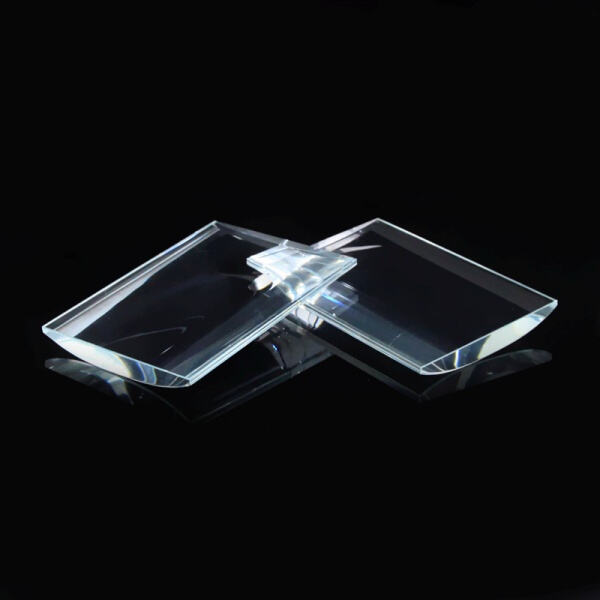
-
+86-156 60188203
[email protected] - Dazhai, Nanyang City, Henan Province China
- الأثنين - السبت 8.00 - 18.00 مغلق يوم الأحد

العدسات الأسطوانية والكروية هي عدسات مجردة تُستخدم على نطاق واسع في مجالات مثل العلوم، الطب والتكنولوجيا. لقد كانت لهذه العدسات أهمية كبيرة لأنها تسمح للعلماء والأطباء برؤية الأشياء الصغيرة التي لا يمكن رؤيتها بالعين المجردة.如果没有 هذه العدسات، لفقدنا الكثير من البيانات حول البيئة. يتناول هذا المقال ما تقوم به هذه العدسات، الطريقة التي تعمل بها، الفروق بين هذه العدسات، وكيف تساعد في العلوم والطب وكيف يتم تحسينها حاليًا لجعلها أفضل.
تُستخدم المواد الشفافة مثل الزجاج أو البلاستيك لإنشاء عدسة أسطوانية عدسات. هذه العدسات مصممة لثني الضوء بطريقة معينة عندما يمر الضوء من خلالها. بثني الضوء، تتيح لنا الحصول على وضوح أفضل لتلك الصور. عادة نجمع هذه العدسة مع أنواع أخرى من العدسات لصنع أدوات تمكننا من النظر بشكل أعمق وأكثر وضوحًا. يمكنها جعل شيء يبدو أكبر، حتى نتمكن من رؤية التفاصيل بسهولة أكبر، أو بالعكس يمكنها جعل شيء يبدو أصغر، وهو ما يكون مفيدًا في حالات أخرى.
تُصنع العدسات الأسطوانية لمساعدة الأشخاص الذين تكون رؤيتهم ضبابية بسبب الاستجماتيزم. يحدث هذا عندما لا يتم تركيز الضوء بشكل صحيح داخل عينك، مما يجعلك ترى الضبابية. في المقابل، تُستخدم العدسات الكروية للبُعد والقُرب البصري. تحتاج هذه العدسات لأن الكرة العينية إما أن تكون طويلة جدًا أو قصيرة جدًا، مما يجعل من الصعب رؤية الأشياء سواء عن قرب أو من بعيد.
1) العدسات الأسطوانية و2) العدسات الكروية هما نوعان أساسيان من تقنية البصريات الحديثة. لا يمكننا رؤية الأشياء الصغيرة، مثل الخلايا، باستخدام هذه الأدوات، وحتى دراسة النجوم والمجرات في الفضاء تكون مستحيلة بدون هذه العدسات. إنها مفيدة في مساعدة الأطباء على تشخيص وعلاج مجموعة واسعة من الأمراض والظروف الطبية. ببساطة، العدسات الأسطوانية والكروية قد غيرت فهمنا للبيئة المحيطة بنا أو العالم الخارجي. إنها تربط بين العالم كما نعرفه والعالم الذي يجب استكشافه.

بعد ذلك، دعونا نميز بين العدسات الأسطوانية والعدسات الكروية. يختلف مظهر شكل العدسة بناءً على ما إذا كنا ننظر إلى الجزء العلوي الأسطواني أو الجانب. هذا يعني أنها تكسر الضوء بشكل مختلف، مما يجعلها أداة لمساعدة حالات الاستجماتيزم. من ناحية أخرى، العدسات الكروية دائرية وتبدو متطابقة من الأعلى ومن الجانب. وهذا يجعلها مفيدة لتصحيح مشاكل البصر الشائعة مثل قصر النظر وطول النظر، والتي تحدث بسبب أن العين تكون إما طويلة جدًا أو قصيرة جدًا.

أدى اختراع العدسات الأسطوانية والكرية إلى تقدم كبير في مجالات العلم والطب التي نستخدمها هذه الأيام. تسمح هذه العدسات للمبحرين بفحص الهياكل الصغيرة جدًا مثل الذرات والجزيئات عن كثب. وقد مكنهم هذا التحكم من اكتشاف أشياء جديدة مثيرة في علوم الكيمياء والعوامل المادية. وفي الطب، تتيح هذه العدسات للأطباء رؤية الجسم البشري باستخدام أدوات مختلفة مثل المجاهر، المناظير، وآلات السونار. هذه التقنية معقدة، لكنها مهمة لأنها تمكن الأطباء من اكتشاف وعلاج الأمراض مثل السرطان، أمراض القلب والسكري. تعتبر هذه العدسات حاسمة للكثير من التطورات الطبية.

مع مرور الوقت، شهدت العدسات الأسطوانية والكروية تطورًا وتحسينًا كبيرًا. في السابق، كانت هذه العدسات تُصنع من الزجاج، الذي كان ثقيلًا وأكثر هشاشة مقارنة بالبلاستيك الذي نستخدمه اليوم. في أيامنا هذه، ساعد التقدم التكنولوجي في تمكيننا من صنع العدسات باستخدام مواد خفيفة ومتينة مثل البلاستيك. وهذا التعديل يجعل العدسات أكثر قابلية للإدارة واستخدام أسهل.
نان يانغ جينغ ليانغ، مصنع مكونات بصرية، لديه مساحة 10,000 متر مربع. تركيزنا في معالجة العدسات الأسطوانية والكرية هو تصميم وإنتاج أنظمة بصرية ومعالجة المكونات البصرية. يمكننا تلبية جميع المتطلبات المكونات البصرية
مع شهادات ISO9001، شركة تكنولوجيا جديدة عالية التكنولوجيا في الصين، CE، SGS، تمتلك شركتنا أكثر من 300 مجموعة كاملة من العدسات الأسطوانية والكروية، بالإضافة إلى أكثر من 10 باحثين. نحن قادرون على ضمان جودة عالية.
لدينا فريق مبيعات وخدمة ما بعد البيع، والذي يضم أكثر من 60 موظفًا. تمتلك شركتنا خبرة واسعة في الصادرات والاستيراد والتعاون، ويأتي عملاؤنا من شركات البصريات وكذلك الجامعات، ومراكز البحث، والمؤسسات البحثية، وما إلى ذلك. من أكثر من 30000 عدسة أسطوانية وكروية عبر أكثر من 80 دولة حول العالم.
إحدى الفوائد التي تقدمها شركتنا هي أننا نستطيع تصنيع العدسات البصرية حسب الرسومات الخاصة بالعملاء، بدءًا من الحجم الصغير وحتى الكبير، وقد وصل عدد النماذج المتوفرة للإنتاج المباشر من العدسات الأسطوانية والكروية إلى أكثر من 400. لدينا خبرة كبيرة في معالجة المنتجات المخصصة حسب الرسومات، بالإضافة إلى توفر معدات الكشف الكاملة.
Copyright © Nanyang City Jingliang Optical Technology Co., Ltd. All Rights Reserved — سياسة الخصوصية